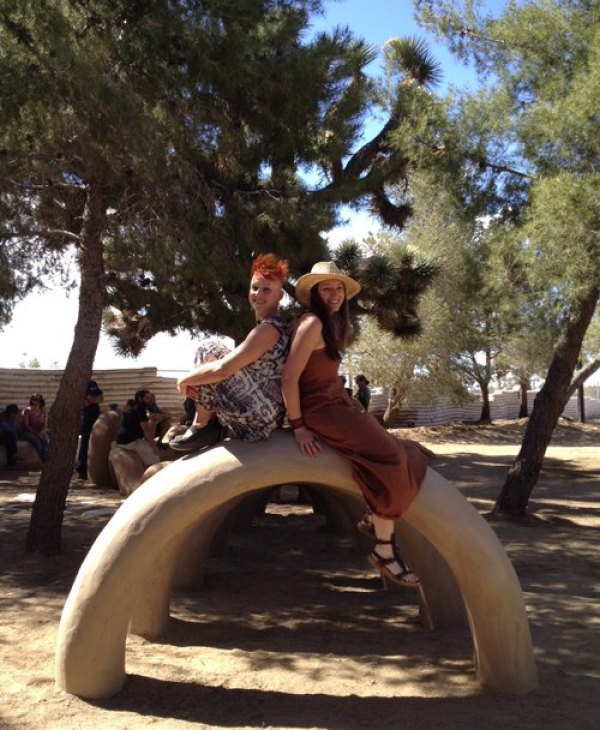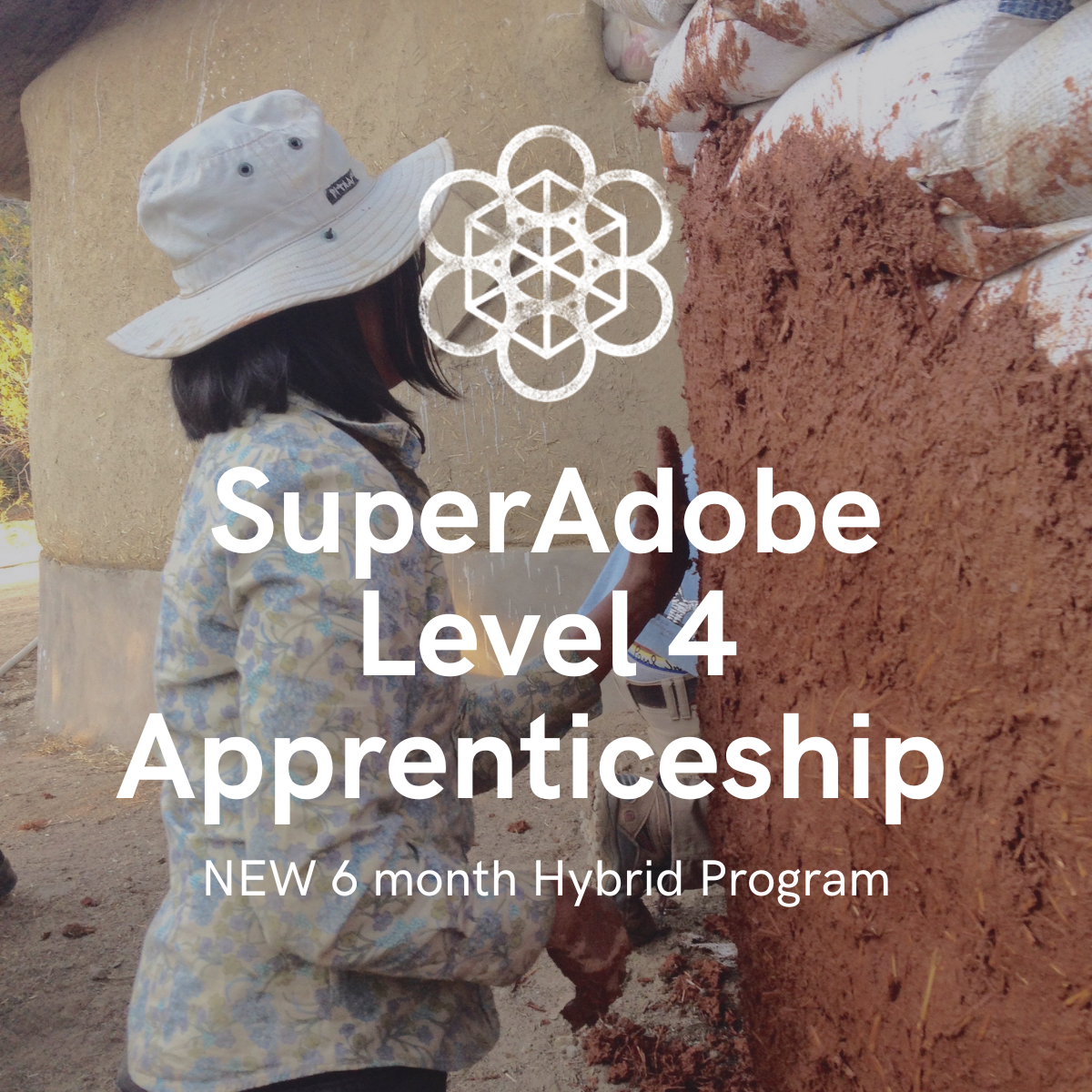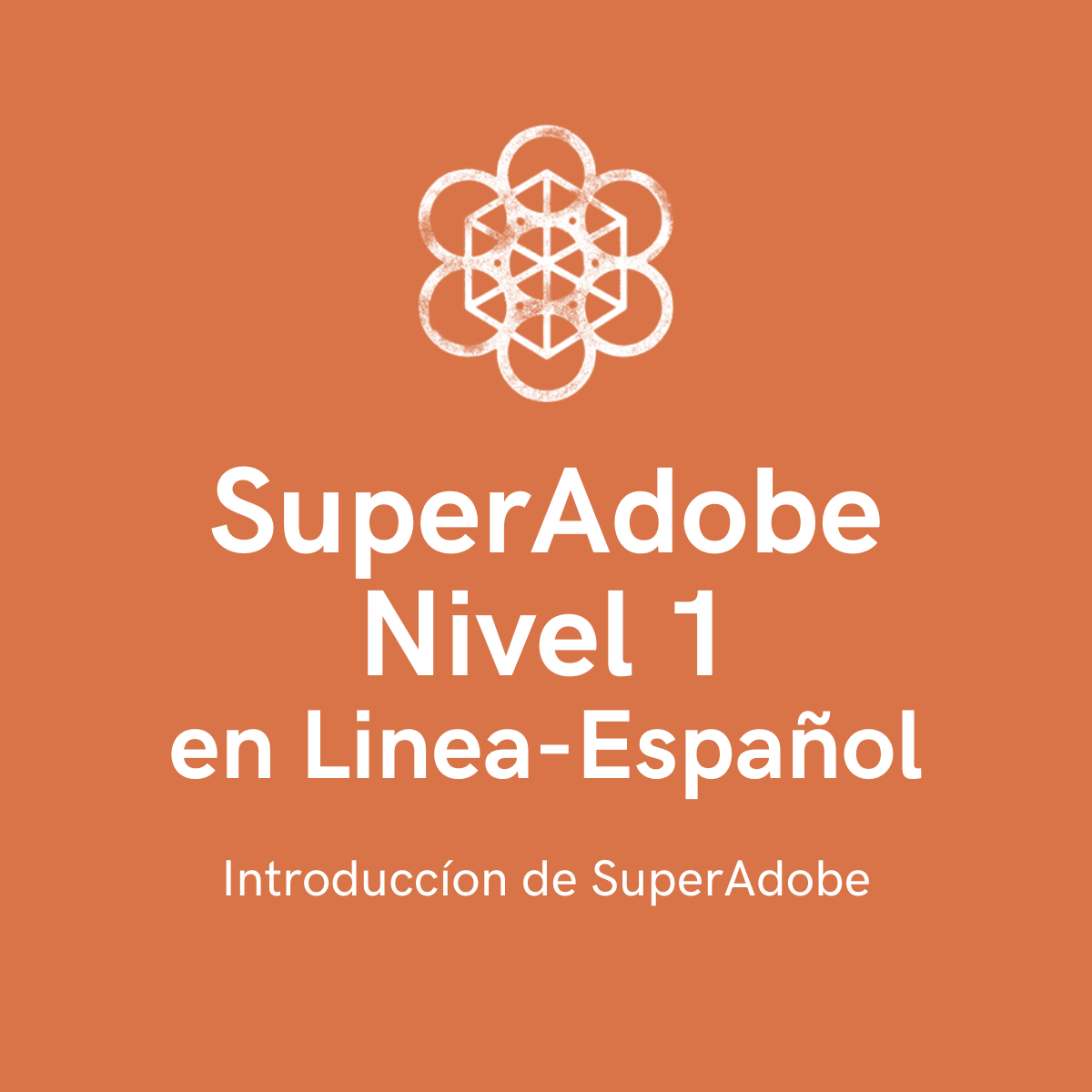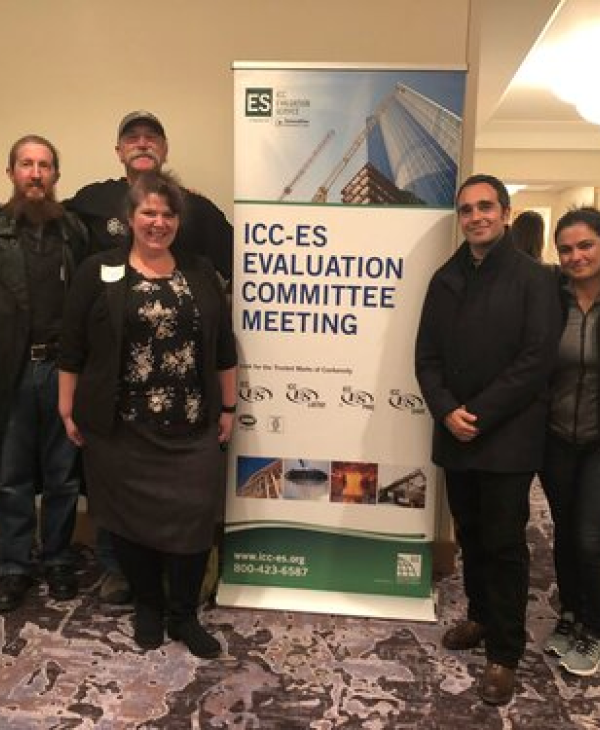By using their backgrounds in fine art and knowledge of SuperAdobe, Laura Smith and Caitlin Deane created a sculpture garden at CalEarth in 2015 that fosters community, interaction, and conversation. This series of three site-specific works is made from stabilized sandbags, and pushes the strength of the arch - a founding principle of the CalEarth curriculum. Laura and Caitlin wanted to explore what the bag was capable of, the flexibility of shape and form, and wanted to inspire others to see that earth architecture can be simultaneously playful and functional.
Since its creation, the SuperAdobe Sculpture Garden has become a hub during children’s workshops and a meditative space for apprentices and visitors alike. Laura and Caitlin look forward to reuniting again in the future to make new work together!
At CalEarth, Caitlin and Laura both completed CalEarth's Dome and Vault Long-Term Apprenticeships in 2012 and 2013.

1. Tell us about the history behind the sculpture garden. How did you both get started on this piece? Our sculpture garden idea was a long time coming, as we conceived of it when we first met back in the spring of 2013. That autumn, we both worked together on the first CalEarth Long-Term Vault Program with three other peers, and built a 12x24 freestanding SuperAdobe vault in 12 weeks. That program showed us how well we work together and how similar our ideas were. Because we both have BFAs in various fine art mediums, we really viewed SuperAdobe as another process through which to make large-scale outdoor sculptures, not just homes.
We started brainstorming the idea of a site-specific CalEarth sculpture garden in the fall of 2014 via Skype, Facebook, and email as Laura was finishing up projects abroad. We pitched the 12-week sculpture program idea with a timeline, budget, and sketches and it was a go!
2. Describe the process for creating one of your pieces. What went into construction? We wanted to treat our program like any other artist residency, so we did our best to be clear with our intentions for the space. We made clay models, mathematical 2D sketches, and artist sketches in perspective with the surrounding trees. Once we settled on three designs, we started sketching on the ground and repurposing wooden forms to create our “negative space.” Forms, which are normally used for windows and doorways, in this instance, were used to hold our complex creations in place.
Once the forms were finished, we started digging! Our first piece “Earthrise,” was Caitlin’s idea to celebrate geometry and echo forms in nature, such as the rainbow. We envisioned a playground akin to monkey bars where kids could climb on and into a tunnel of decreasing arches, which created an optical illusion.

Our second sculpture, “Loop de Loop”, was Laura’s idea to create a whimsical bench that incorporated more advanced bagging techniques. Building the “loop” piece on the top layer was challenging and rewarding, as it is not normally a shape we see in building! Our third sculpture, a ring of arches, was a group idea between Dastan and the two of us. We built the ring using a center compass, as we do with domes, but instead of flat layers of bag, we created tall arches disappearing into the ground and reappearing.
All the large arches in the sculpture garden are bagged, sunk into the ground 1.5' to 2’ deep, speared onto 2-3 pieces of rebar, and cast in concrete. We wanted these pieces to be as safe as possible, so we also added gravel, Portland Cement, and extra rebar where we could. We added wire mesh to make up for unevenness in the bags and did several coats of rough plaster. For our finish coat, we used Lehigh Type 1 White Cement and LaHabra Stucco pigments. The texture was troweled with a sponge finish to create a little grip for safe climbing. Throughout our time building, we battled freezing temperatures and uneven drying due to unexpected storms with 35mph winds! Ultimately, we are proud of what we were able to accomplish, despite some of the more challenging moments.
3. What was your goal for this project? Our goal was to experiment and push the boundaries of SuperAdobe to create pieces that kids and adults could touch and be encouraged to play on. We also wanted this project to be sustainable and affordable, so we used as many reclaimed materials as we could find and only purchased new necessary items.
4. Did you learn any lessons while building these projects? Through this program, we learned that community is INHERENT in SuperAdobe as well as any other natural building method. We really couldn’t have done it alone, and appreciate all the help we received from fellow peers, apprentices, staff members, and alumni. Whether it’s making a dome or a sculpture, having a group build together is not only more efficient, but more fun!
5. What has this work taught you? If anything, this work has taught us the value of perseverance and surrender. Many times we had to re-do layers of bag, deconstruct parts, and do a lot of creative problem solving. There were just as many failures as there were wins, and we deeply value the experience of both. Because there is no “rule book” for creating this kind of work, we had to trust our knowledge of SuperAdobe and our own inner creative processes. What a journey it has truly been since we both stepped through the CalEarth gate! We look forward to keeping our hands dirty and close to the earth.





